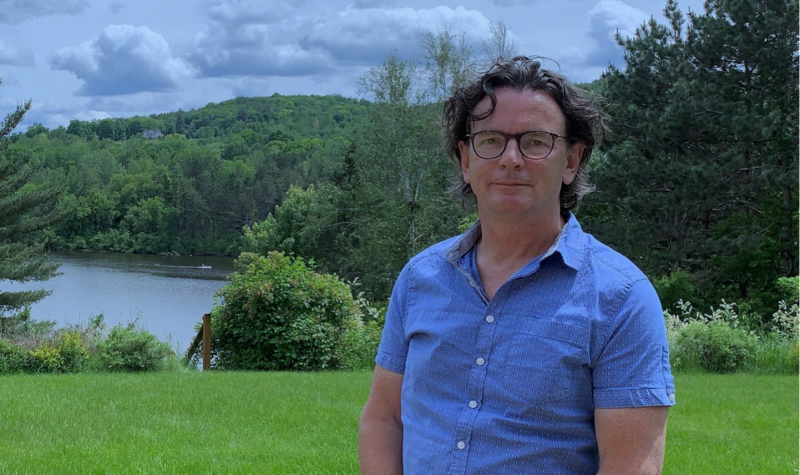Le Comité de sauvegarde du bassin versant du Lac Davignon has launched a water quality sampling campaign for the Lac Davignon watershed. The Lac Davignon watershed touches eight municipalities in Brome-Missisquoi. The committee hopes to work alongside each of the municipalities to get a better understanding of the current state of the watershed and what actions should be taken moving forward to protect the watershed. The last water sampling campaign was undertaken 10 years ago in 2012 and the committee is striving to get a new report published.
“There was a recommendation in the report (2012) saying that these steps should be taken and again after a certain number of years, but it’s almost 10 years now,” said Pierre St-Arnault, president of Le Comité de sauvegarde. “As a committee, we decided that we would take the lead on it.”
St-Arnault said that the project will take place over a two-year period and it will cost up to $100,000. The committee has partnered with the Town of Cowansville, Le Pacte Rurale Brome-Misssiquoi, the provincial government, and they have reached out to the other municipalities to help financially support the initiative.
“The idea is to measure, and identify, the sources of the main contaminants that are navigating through our waters. (…) So now, 10 years later, we want to evaluate again the same spots,” explained St-Arnault. “We have almost 20 spots that we take samples of water and we are going to see the impact of what was done in the past years as far work to minimize this input of sediments.”
St-Arnault explained that bacteria, like blue-green algae, mainly feed off phosphorus, which results limiting the access that citizens have to the lake. The water sampling will help with identifying these sources of bacteria and paint a clear picture of the current state of the watershed, which serves as the main source of drinking water for the eight municipalities.
“We’re going to have a detailed report of the sources of condiments. We will share this report with all of the municipalities. So, each municipality will have the responsibility to take action if possible and if required,” he said. (…) “We are definitely looking for points of action because it’s always time to act. Everyone is raising alarm flags now regarding the quality of water in different lakes, it’s the same here.”
With thorough analysis needed, the water sampling will be done in collaboration with the Organisme De Bassin Versant De La Yamaska.
“They are taking charge of all these samples. They are taking care of all the lab work and they will compile all of this because we definitely don’t have the expertise required,” noted St-Arnault.
At the end of the campaign, St-Arnault hopes that the report is taken seriously.
“We’ve heard about reports ending up shelves, well this one will hopefully not end up on the shelves. (…) There is a lot of hope, when you do a project like this, you hope that when it ends up on someones desk that they decide to take action,” mention St-Arnault.
The water quality sampling campaign is still looking for financial support and new members. For more information, visit the Le Comité de sauvegarde du bassin versant du Lac Davignon website.
Listen to the full interview below:


